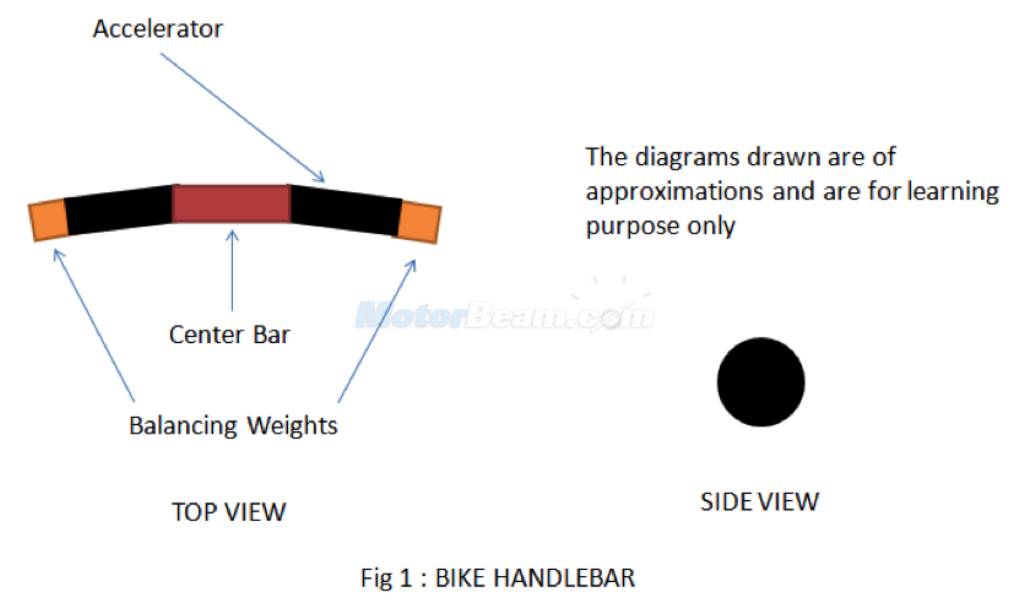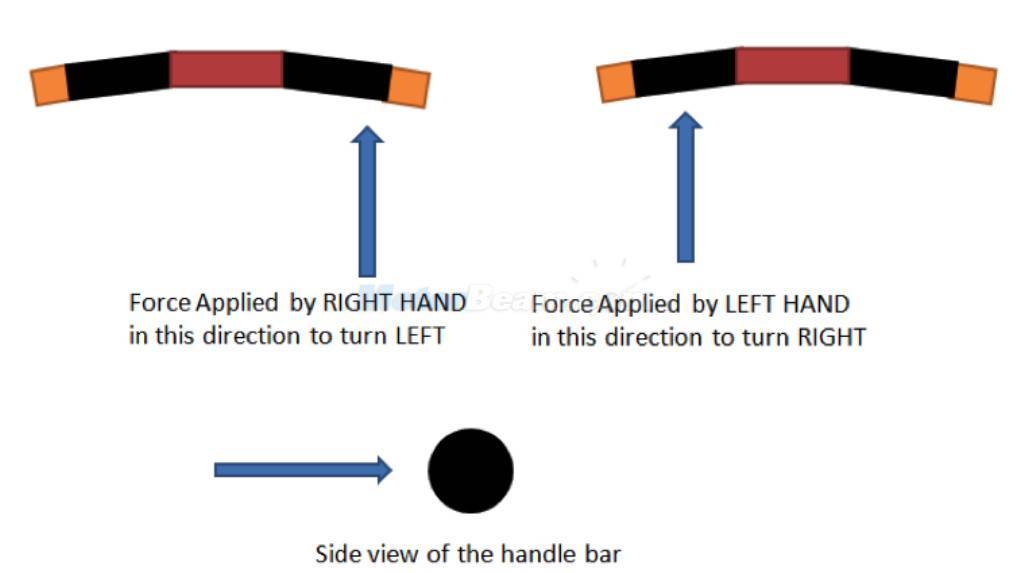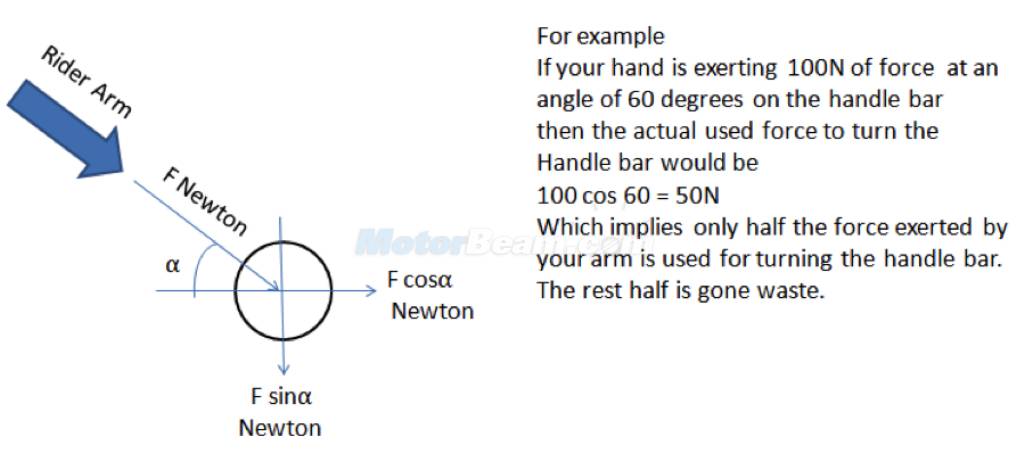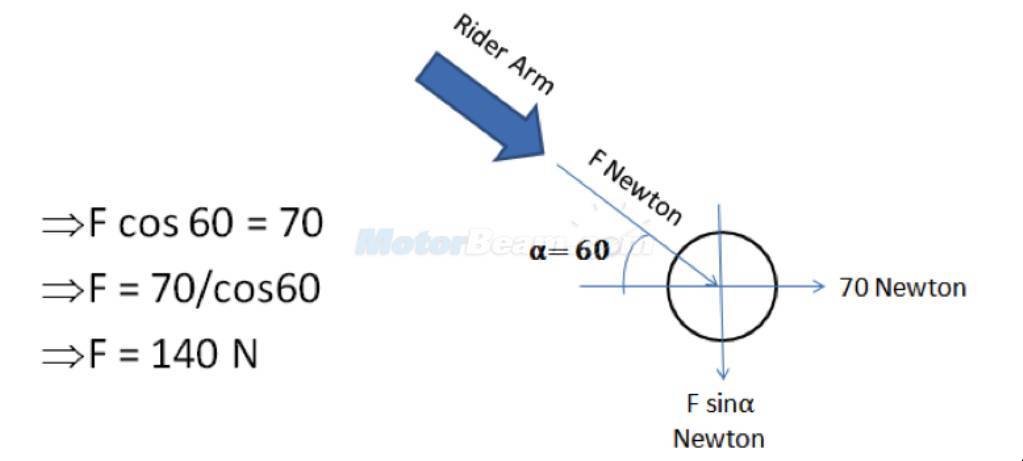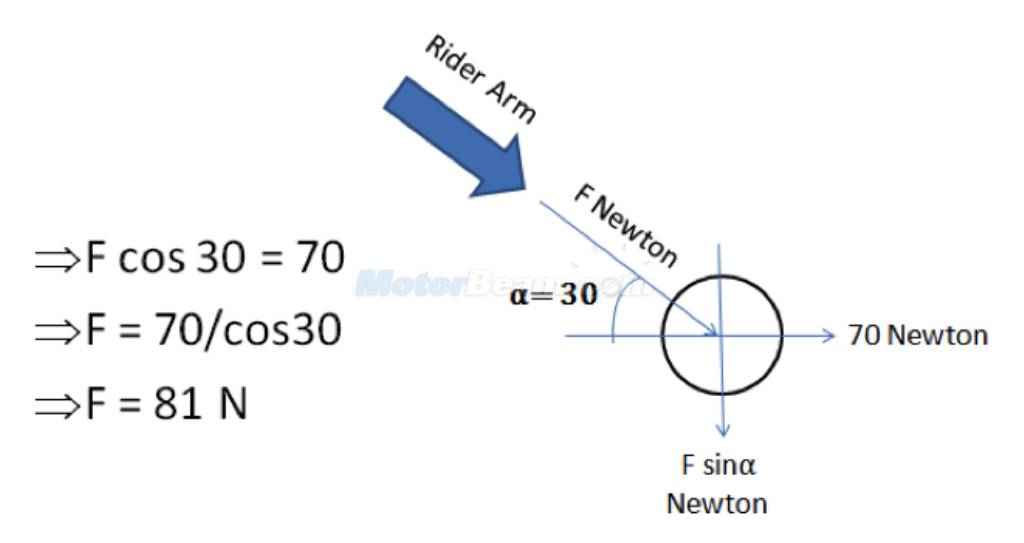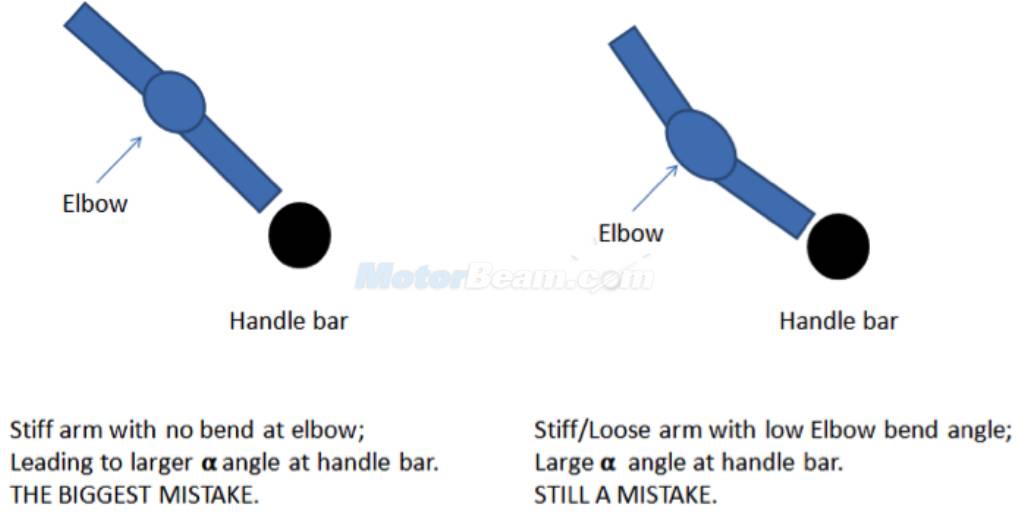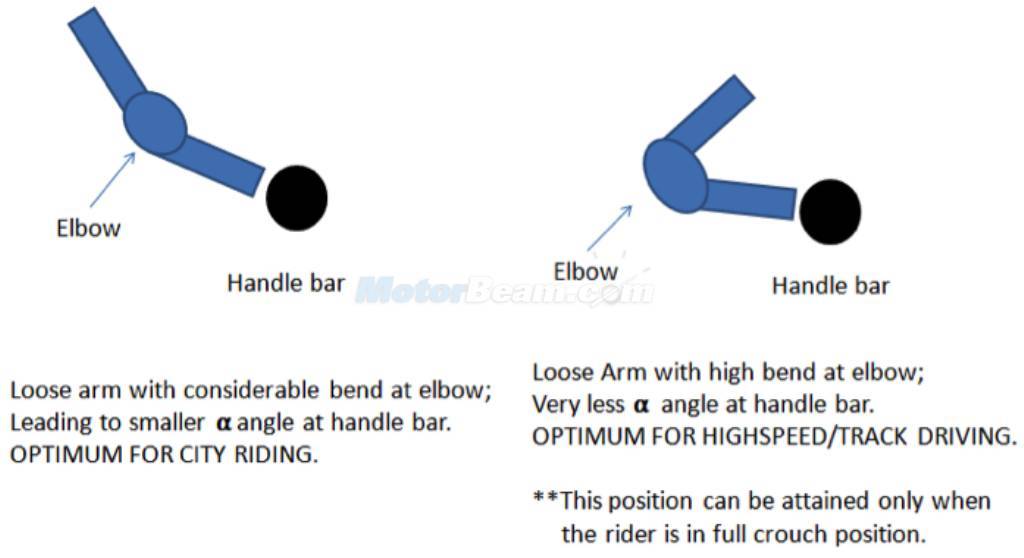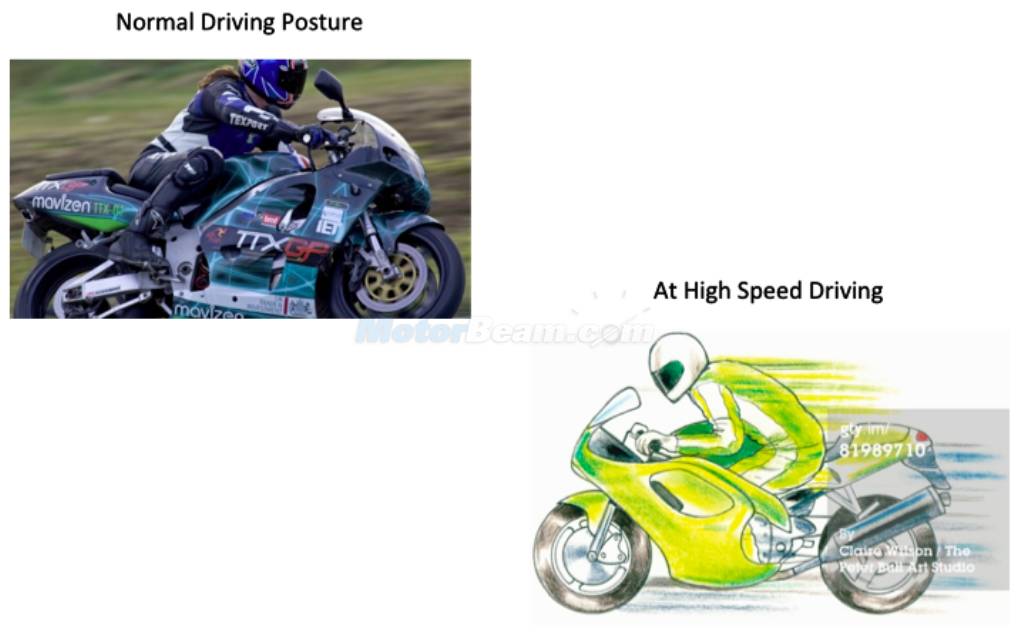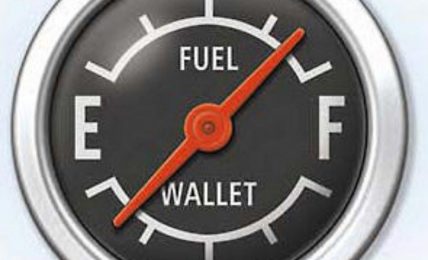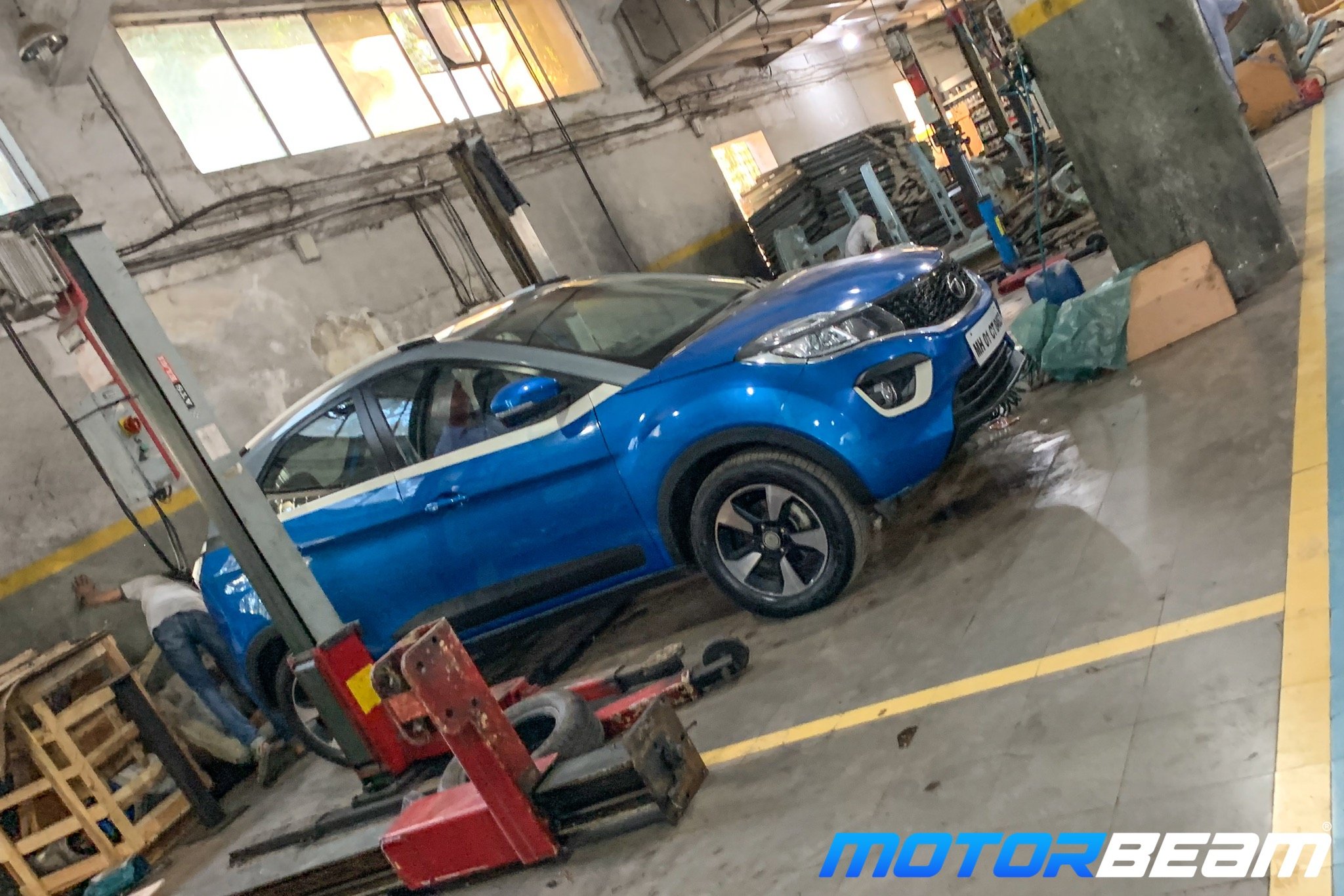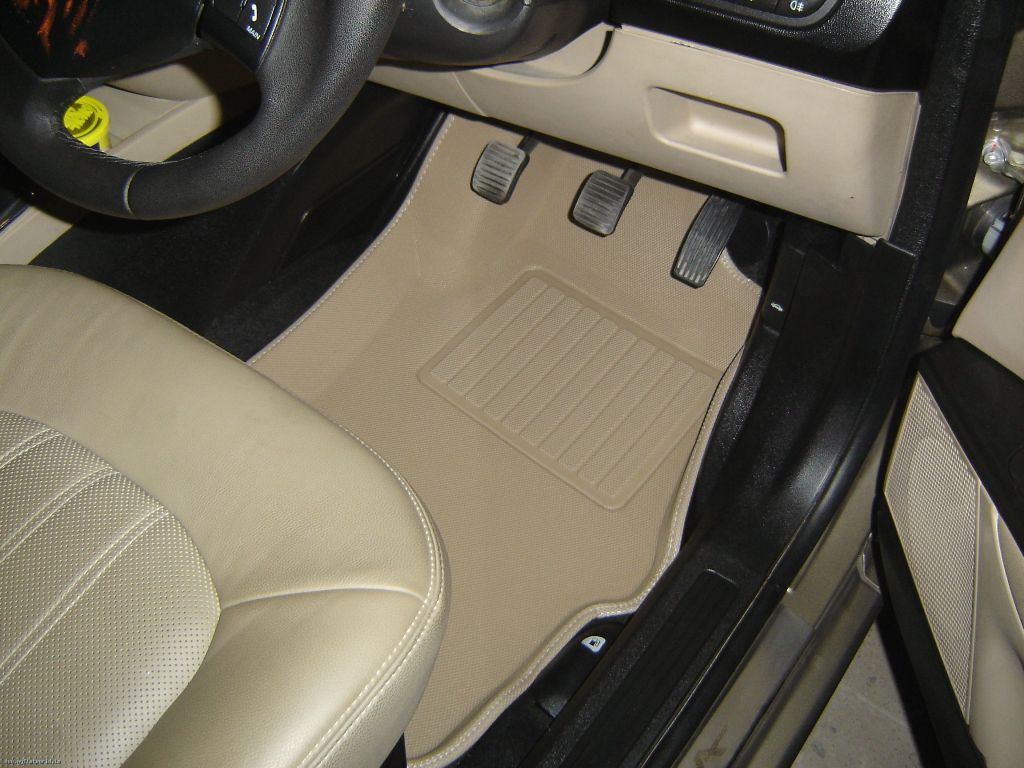My name is Nischal and I am biker, a mechanical graduate and working in the automotive sector; I have dedicated this life to automobiles. Just like a common man for years, I have seen people riding 100cc, 200cc, 600cc and even superbikes. Higher capacity bikes inspired me on taking up biking. I started chasing my passion recently after buying a quarter-liter bike. I was very uncomfortable with the sporty position on the new bike as my previous one was a conventional 150cc bike with upright sitting position. I started my quest for optimising the riding positions; related mechanical equations to ergonomics and discovered something. The results said that these many years I was riding the bike with the wrong body posture. I still see rider’s riding bikes with wrong postures especially the sporty ones. Hence I am attempting to educate our readers about proper riding positions supplemented with mathematical calculations. I am dedicating this article to my inspiration Keith Code.
The following article contains mathematical equations and the values are rounded off. In-case of any further queries, you can reach me in the comments section below.
The above figure represents the handlebar of a bike and its nomenclature. It is very simple and pictures explain the basic parts. So I don’t want to go into details.
The blue arrows in the above figure represent the direction of force that is applied on a handlebar.
Fig 3: Basic theory of force application on the handlebar.
From the figure F, cosα is the final resultant force that actually turns the handlebar. The F sinα force goes waste.
EXPLANATION
Case 1 – Consider a rider requires 70 Newton force to steer the handle. The rider’s hands are at an angle of 60 degree (i.e., α angle) to the handle. The calculation done below is to find out how much force the rider actually has to give to achieve 70 Newton as utilisable force.
So the rider has to imparting 140N force on the handle.
Case 2 – Consider the same rider requires the same 70 Newton force to steer the handle. But this time the rider’s hands are at an angle of 30 degree (i.e., α angle) to the handle. The calculation done below is to find out how much force the rider actually has to give to achieve 70 Newton as utilisable force.
So the same rider will be imparting 81N force on the handle. This means just by reducing the α angle (angle between hand and the handlebar) the rider reduces uses less force to steer the handle.
THE TRUTH –
• Now the math says that the rider will be using 140 N if his/her α angle is 60 degree. To steer the same, the rider will be using 81 N if α angle is 30 degree.
• The change in α angle will lead the driver to avoid 59 N (140-81) of force to do the same steering.
• It also means that the rider will be only using 57% (81/140) of force (at 30 degree) of what the rider generally uses (at 60 degree).
• Now the example I gave is just for ONE TURN. Imagine how many times the rider turns the handlebar while riding in the city!
Based on this, I suggest some hand/body positions as a part of improving ergonomics.
WRONG HAND POSITIONS –
PROPER HAND POSITIONS –
BODY POSTURES –
The left posture is the one many riders would be having. To correct the body postures ensure that –
1) Gap between rear seat and butt is reduced.
2) This will eventually lead the spine to get a small curve which will drop down the shoulder height. I would suggest you to crouch down a little more to get a better curved spine. Not much but just a little bit.
3) Decrease in shoulder height implies greater angle between the elbow joints and lesser α angle.
4) A rider can’t hold his/her muscles stiff if they maintain a curved spine. Hence it will enhance the endurance as body is relaxed.
EXPLANATION –
Spine – The spine should not be straight while riding the bike because of two reasons –
a) Because it will increase the height between shoulder joint and handlebar.
b) Straight spine does not provide cushioning effect as curved spine does (very important especially when the rider faces speed-breakers and potholes).
Muscles – Stiffer muscles will lead to poor response time. The body will also be strained as much effort is used to keep the muscles stiff.
Neck – Same as muscles; never stiffen the neck because relaxed neck allows the head to stabilise after going through a speed breaker/pothole. It’s again because of the cushioning effect.
All you have to do is to get adjusted to the new posture.
** Some of the driving positions are already in use for track/high speed driving.
THE PRACTICALITY –
• Remember it is important for the riders to keep their muscles relaxed while riding.
• It is relatively difficult to adjust our riding habits but it is worth to give it a try for better handling.
** HAPPY & SAFE RIDING **


